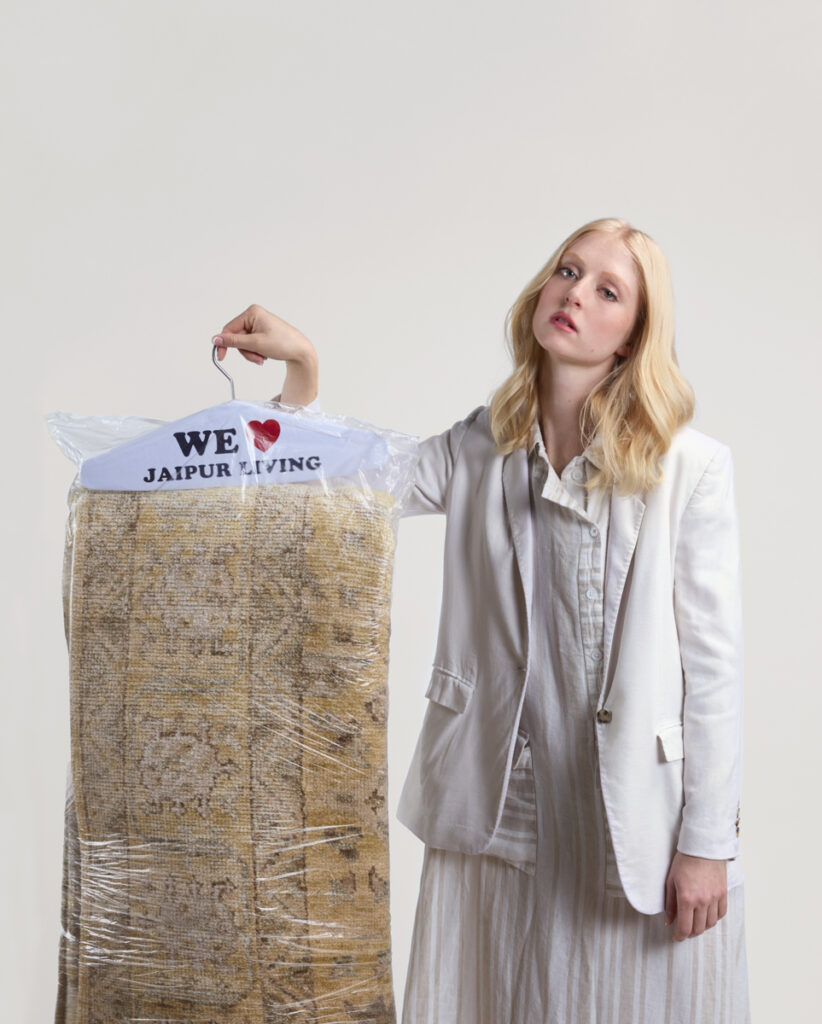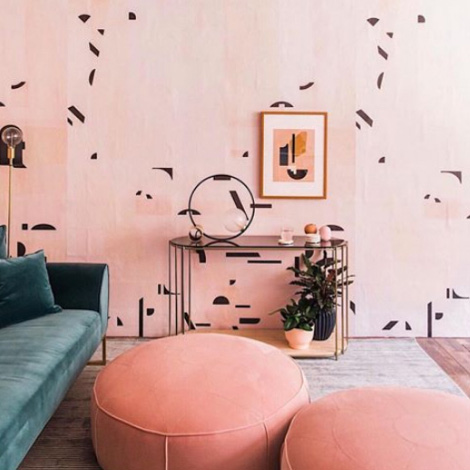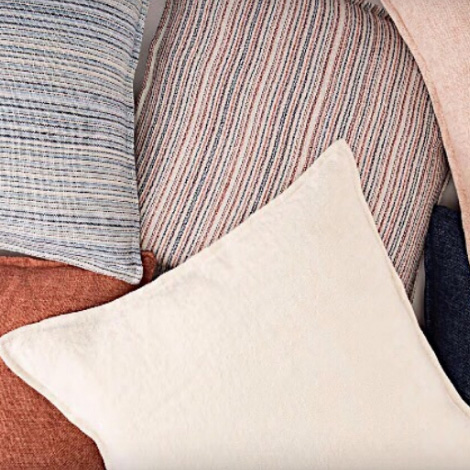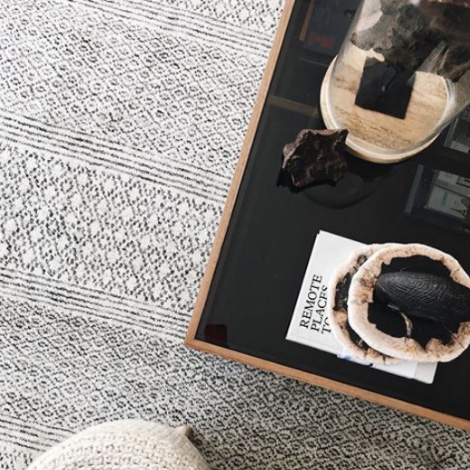One of the Catch-22’s of interior design: Beautiful materials and stunning designs aren’t always the lowest maintenance options. But that doesn’t mean you should shy away from more delicate materials. We’ve shared our steps for rug cleaning and care, but what about materials like satin or jute? Here’s how to maintain and clean these more sensitive fibers and constructions according to the Jaipur Living experts.
Silk and Viscose Rugs
Why to love: Silk rugs—and their more affordable viscose counterparts—are beloved for their luminous dimension and soft, luxurious hand. Silk and viscose fibers also take dye very easily, which means silk rugs are able to showcase a depth of color not always achievable with wool or synthetic fiber rugs.
How to clean and maintain: As a general rule of thumb, place silk and viscose rugs in low-traffic areas (think bedrooms) that avoid daily wear and tear. It’s also good practice to avoid too much sunlight on your silk and viscose rugs, as they can be more susceptible to premature fading. Consider rotating your rug every three to four months, so all areas of the rug are exposed to sunlight equally. Also avoid moisture or steam, which can damage your silk rug over time (be sure to avoid placing silk or viscose rugs in bathrooms).
See also: Material World: Inside Viscose
When cleaning silk and viscose, it’s important to be very gentle. If vacuuming, use a brushless suction head and never use a beater or roller brushes, which may pull out fibers, reduce the pile, and damage the rug. You can also gently sweep your rug or shake it out to remove any debris. For a more serious clean, consult a professional rug cleaner.
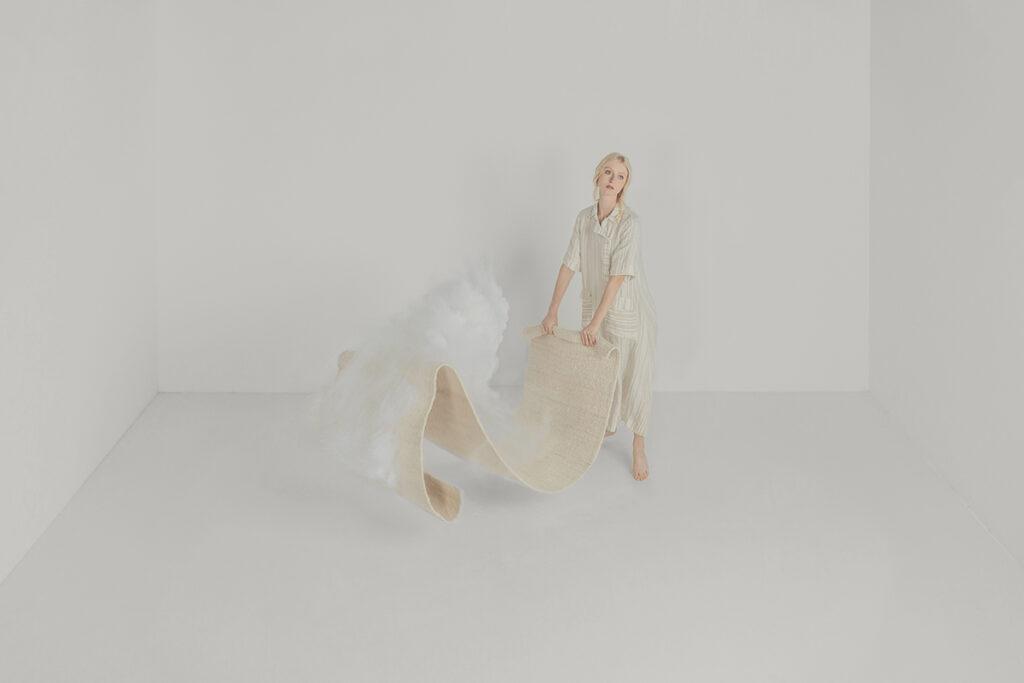
Don’t forget to vacuum underneath natural rugs, like Naturals Tobago, as dirt and dust can sift through the weave.
Natural Rugs
Why to love: Natural rugs made from plant-based fibers like jute, sisal, or seagrass lend an organic texture to spaces of any style. They’re also biodegradable and eco-friendly, effective at absorbing harmful materials (like nitrogen dioxide and sulfur dioxide), and they reduce allergens.
See also: The Guide: Sustainable Materials
How to clean and maintain: Natural fiber rugs or accessories will naturally fade in sunlight over time, so it’s best to keep them out of direct sunlight to avoid discoloration. You can also trim any “sprouts,” or stray tufts/loops that are normal in natural fiber rugs, with scissors. Vacuum rugs on a regular basis with the beater bar off, occasionally vacuuming under the rug to remove dirt and dust that can sift through the weave onto the floor.

Rugs and accessories with embellishments or more delicate materials, including the Emerson collection of pillows, require careful cleaning. Always check the tag for specific instructions.
Embellished Rugs and Accessories
Why to love: From fringe accents to woven textures to pom pom details, rugs and accessories with detail-rich designs are an easy way to instantly infuse a space with texture and charm.
How to clean and maintain: Rule of thumb: Take your rug or accessory outside to give it a good shake from time to time to get rid of any debris. You can also clip loose ends or shedding fibers with scissors and vacuum with a handheld brushless attachment to prevent pulling of threads. If possible, it’s also a good idea to rotate your rug or accessory to equalize wear and sun exposure.
See also: The Guide: 5 Steps To Easy Rug Cleaning
Make sure you know what material your rug or accessory is made from—this will help determine if any special steps are needed for cleaning and care. You can also scrape off food or debris with a dull instrument. Generally speaking, if spills occur, spot-clean by blotting with a clean cloth, water, and mild soap. Period professional cleaning is recommended.

Viscose rugs, such as Malibu by Barclay Butera, should be placed in low traffic areas of the home to avoid damaging the fibers.



